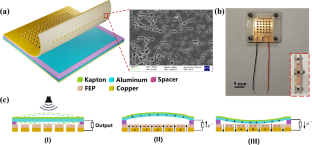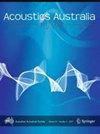Self-Powered Acoustic Sensor Based on Triboelectric Nanogenerator for Smart Monitoring
Abstract
Sound as a ubiquitous energy in our surroundings is clean and sustainable, and carries abundant information in a wide frequency bandwidth. However, effectively harvesting and utilizing acoustic energy is still hindered by the limitations such as low energy density of acoustic energy and lack of novel application. In this paper, we successfully present a self-powered acoustic sensor, which is composed of an adjustable spacing structure and sound-driven triboelectric nanogenerator (TENG). The acoustic sensor exhibits excellent electric output properties because of the poriferous electrode structure, ultrathin vibrating membrane as well as high-quality triboelectric materials. The sensor can deliver a maximal output voltage of 6.28 V with the sound frequency of 350 Hz and sound pressure of 110 dB. In addition, the electric output frequency is closely related to the applied acoustic wave and the corresponding directional dependence pattern as a butterfly is highly symmetrical. Our approach presents a cost-effective strategy to develop self-powered acoustic sensor and shows great potentials in home automation, self-powered microphone, sensor network and artificial intelligence.


 求助内容:
求助内容: 应助结果提醒方式:
应助结果提醒方式:


